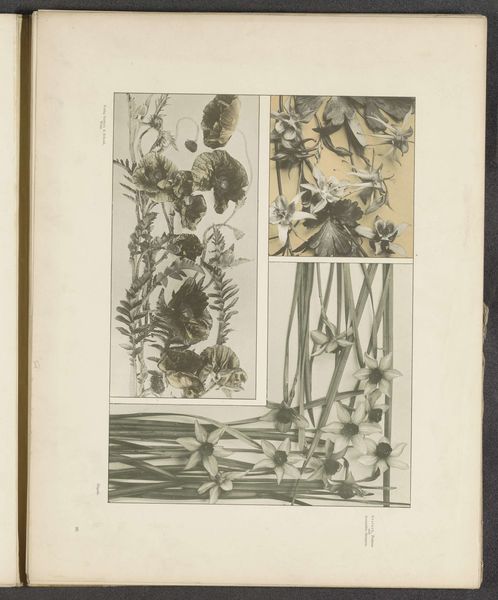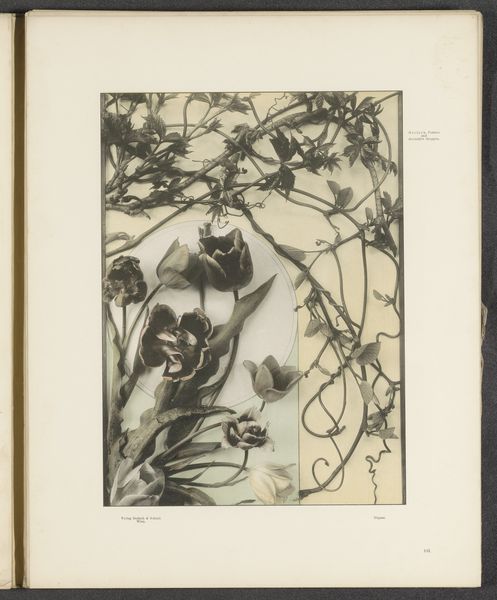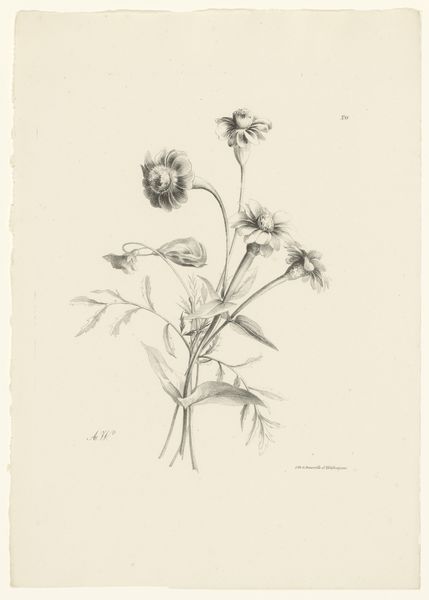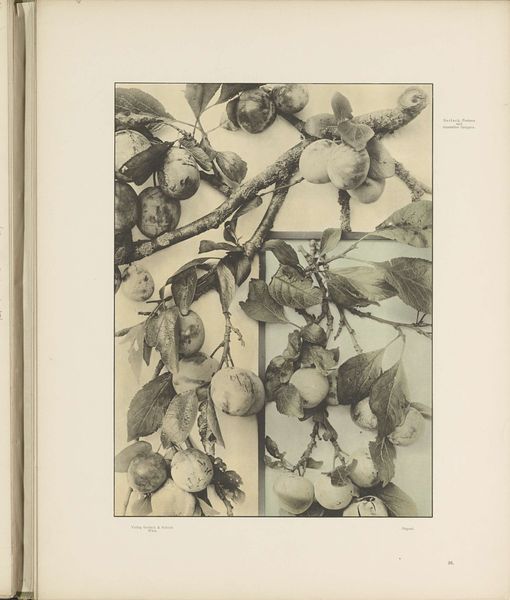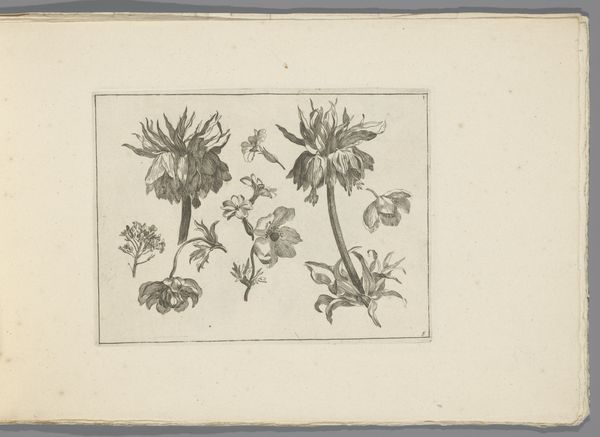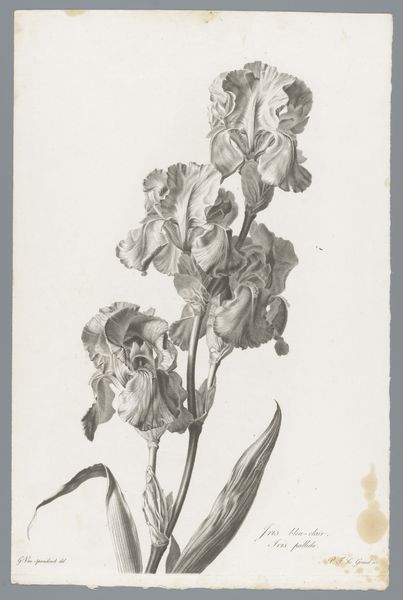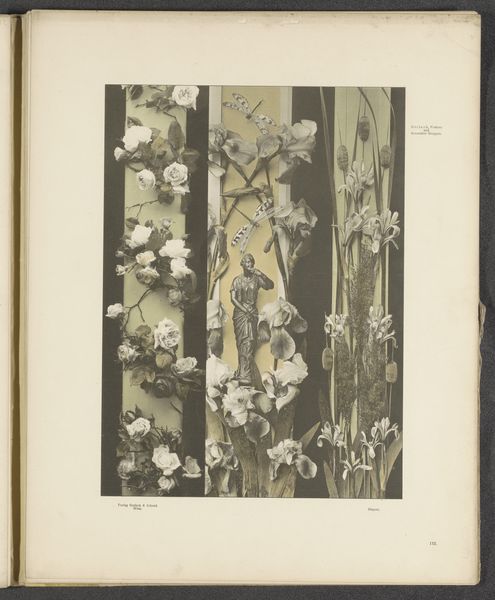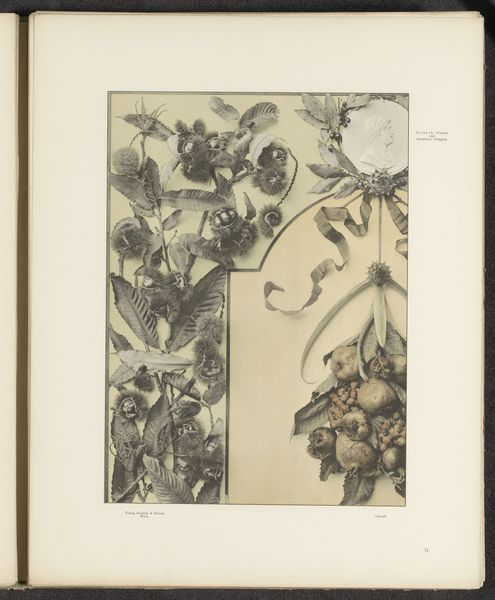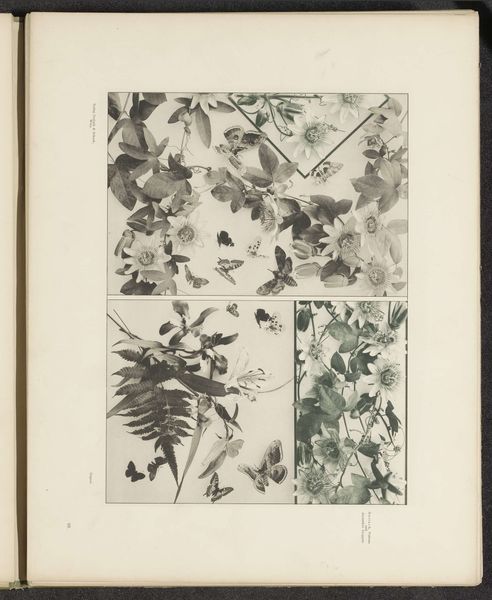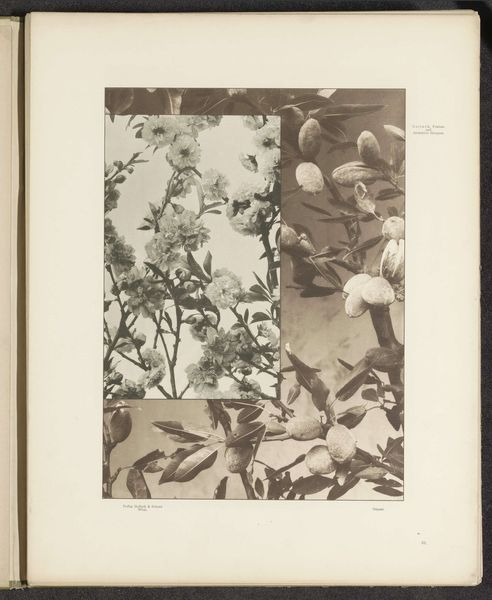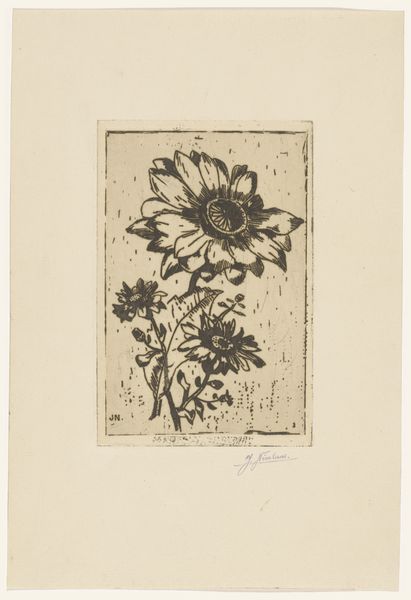
photography
#
still-life-photography
#
pictorialism
#
photography
Dimensions: height 293 mm, width 214 mm
Copyright: Rijks Museum: Open Domain
Editor: Here we have "Klaprozen," a photograph dating to before 1897, by an anonymous photographer. It looks like a still life of poppies. It feels both fragile and a bit faded. What's your take on it? Curator: This piece, for me, raises interesting questions about photographic materials and their lifespan. Think about the photographer's labor: cultivating, arranging, and photographing these flowers. But also, consider the chemical processes involved in early photography. This isn't just a record; it's a constructed object. Editor: Constructed, how so? Curator: Well, look at the soft focus. Pictorialism, the style here, wasn't about capturing reality; it was about manipulating the photographic process to create an artistic effect. They're challenging the notion that photography is purely representational. What do the materials themselves, and the way they degrade over time, tell us? Editor: I see. It’s about the active creation of the photo rather than simply pressing a button. Like a painter manipulating their media? Curator: Exactly. And think about the audience: who was consuming these images and how were they valued? These pictorialist photographs were often presented as high art, emulating painting. It prompts us to rethink art’s value in the art market. Editor: That’s a good point. It sort of blurs the line between crafts and fine art in terms of what we should value. This helps understand photography in its own right. Curator: Precisely. And remember that even in the digital age, our images rely on material conditions and specific processes of creation and consumption.
Comments
No comments
Be the first to comment and join the conversation on the ultimate creative platform.

